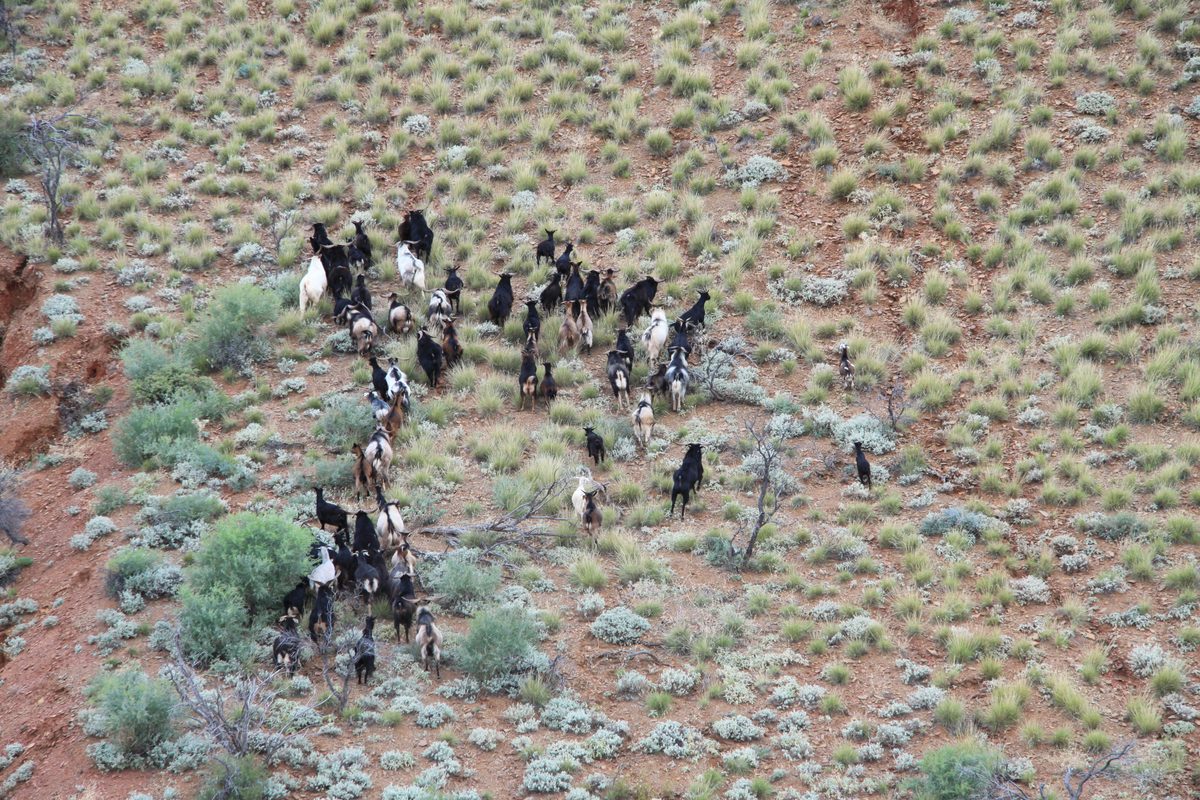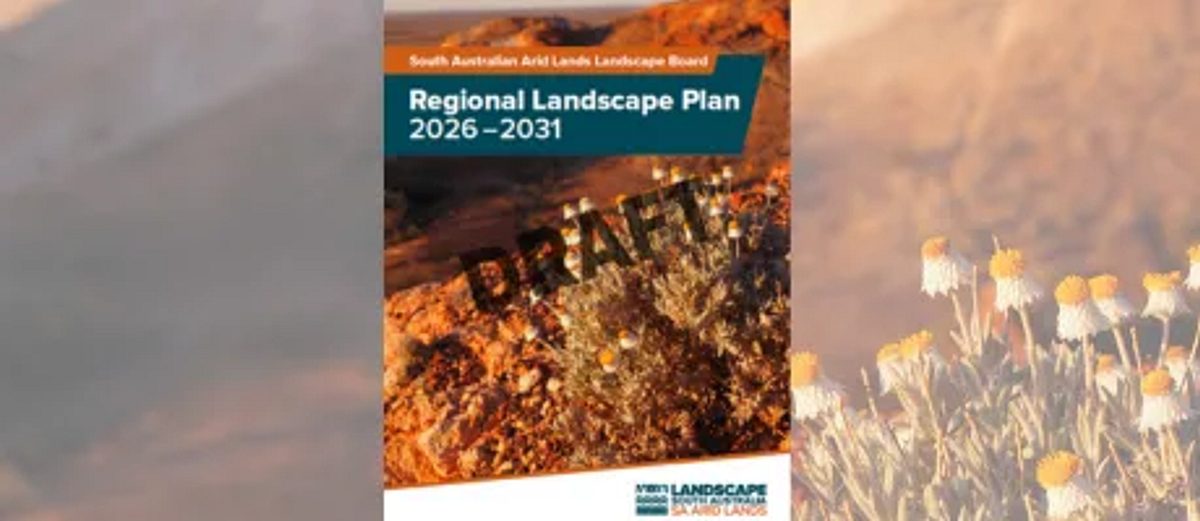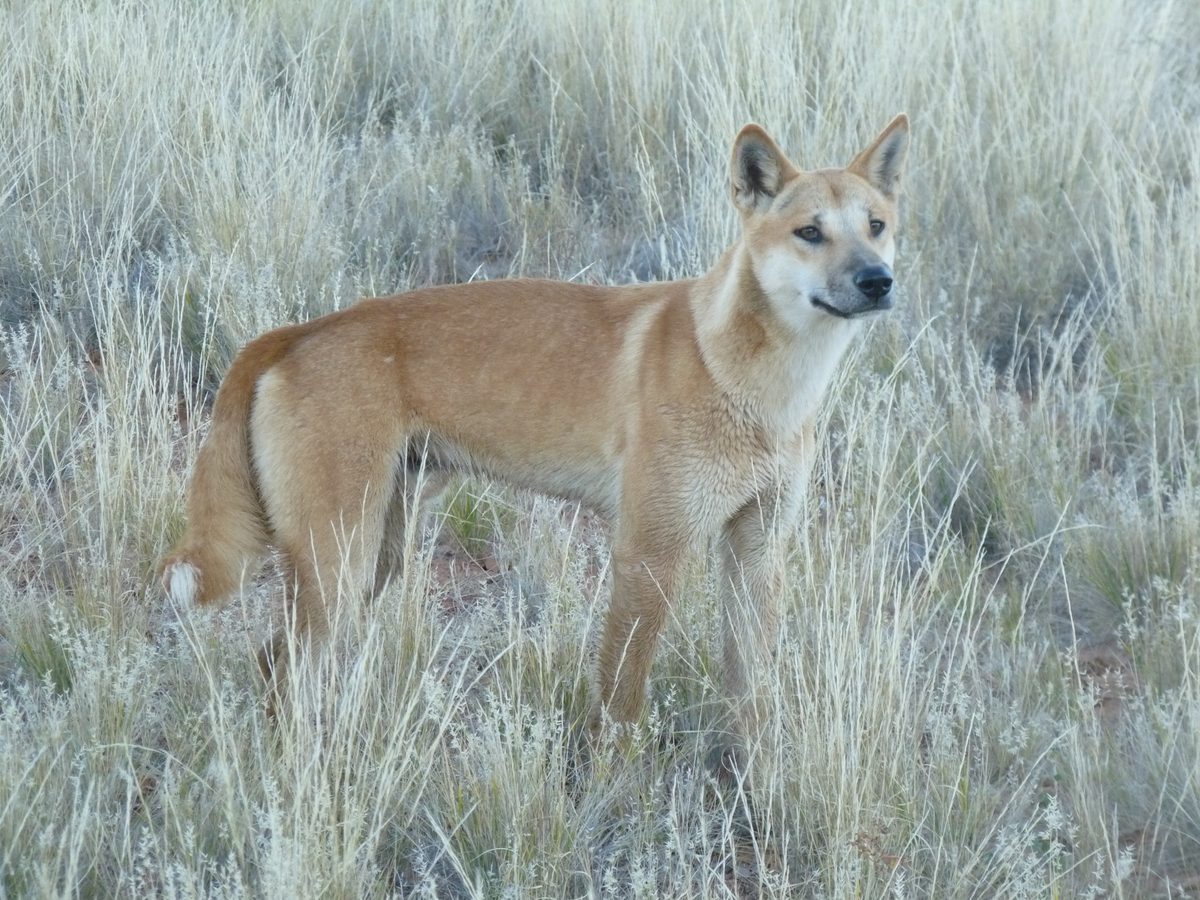Water preserved through goat removal
Almost 3000 goats have been removed from the Gawler Ranges as part of a shared control program on Mt Ive Station – keeping water in the property’s tanks and saving almost fifteen hours of labour every week for the property manager.
A multi-faceted exercise, it involved a ground muster by the property owners, followed by aerial control coordinated by the SAAL Landscape Board, jointly funded with Primary Industries and Regions SA (PIRSA) and undertaken by skilled marksmen from the Department for Environment and Water.
Some 1340 goats were trucked off the property, a further 1240 were controlled in the aerial program, 125 undersized goats were sent to the Monarto Safari Park to feed the big cats and native carnivores with a further 110 utilised for the Statewide aerial fox baiting programs.
Many of the female goats captured as part of the exercise were carrying one or more babies.
The arrangement to feed animals at Monarto Safari Park has come about through the Sustainable Use of Undersized Goats to Protect Native Habitat and Pasture project, which is funded by the State Government’s Landscape Priorities Fund.
The property contacted the SAAL Landscape Board to seek support after noticing they were fast running out of water, despite destocking sheep due to the ongoing dry conditions.
With the average goat eating 960g of vegetation each day, the combined exercise has saved 2880kg of native vegetation on the property each day. It makes a positive impact for primary production and conservation outcomes.
SAAL Senior Biosecurity Project Officer Charlie Eager said it was fortunate the property was able to link into an aerial control program happening on the Eyre Peninsula to support on-ground control.
While the exercise was not able to control all goats on the property, it has certainly made inroads to control efforts.
Mt Ive’s Aaron Newton said staff were happy with the control program results, which saved considerable water and feed, which is already important, but particularly so during dry and difficult conditions.
He said at least another 300 smaller goats had been removed from the property’s program area since the control activity, and staff continue to work to remove goats.
“Dams have dried up throughout the Gawler Ranges, but Mt Ive has some underground water that is reliable, and the goats are attracted to that,” Aaron said.
“We’re fortunate to have that because it also makes the capture easy with many goats gathering in one area.”
He said the mustering had provided additional funds and time to spend carting water for stock.
Opportunities for the removal of undersized goats from properties across the region following mustering efforts is ongoing. To get involved, landholders can contact the SAAL Landscape Board.
The operation on Mt Ive was followed by a second aerial control program that removed a further 523 feral goats from inaccessible areas of the Western Gawler Ranges as part of the Resilient Rangelands project, funded by the State Government’s Landscape Priorities Fund.
This work also received support in partnership with PIRSA’s Flood Recovery Weeds and Pest Project using Commonwealth Disaster Recovery funding


